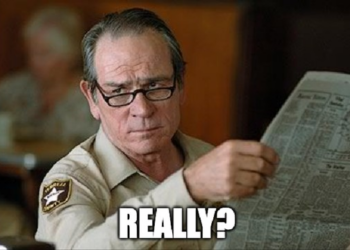I
Published in 36 lavishly illustrated quarto volumes between 1749 and 1804, the Comte de Buffon’s Histoire Naturelle, générale et particulière, avec la description du Cabinet du Roi rivaled Denis Diderot’s Encyclopédie as the publishing sensation of the 18th century. Buffon’s project, conceived of as a comprehensive compendium of the natural sciences, included three volumes of general essays, 12 volumes on quadrupeds, nine volumes on avifauna, five volumes on minerals, seven volumes of supplements, and after Buffon died in 1788, his protégé Bernard-Germain-Étienne de La Ville-sur-Illon, comte de Lacépède produced eight more installments on quadruped and limbless reptiles, fishes, and cetaceans in an effort to round out the collection.
L’Histoire Naturelle was in some ways ahead of its time, with Buffon tentatively exploring what we would now call evolutionary thought. “Not only the ass and the horse, but also man, the apes, the quadrupeds, and all the animals might be regarded as constituting but a single family,” wrote Buffon, adding that man and ape might even “have a common origin,” such is the “power of nature” which can, “with sufficient time … derive all the other organized beings” from a single being through the powers of “progress or of degeneration.” According to Buffon, organisms were equipped with a sort of “internal mould” which could be altered by changes in the environment, an idea that clearly influenced Jean-Baptiste Lamarck, Étienne Geoffroy Saint-Hilaire, Robert Chambers, and other early pioneers of evolutionary theory.
In other ways, the Comte de Buffon’s Natural History was very much a product of its time. The botanist Sandra Knapp has noted how Buffon’s prose was “so purple that the ideas themselves are almost hidden,” his text reading “more like a romantic novel than a dry scientific treatise.” Stylistic excesses aside, Buffon’s text was riddled with inaccuracies — he thought the epidermal scales on beaver tails derived “from the fish on which they feed,” for example — and as an armchair naturalist, he had an unfortunate tendency to cite third-hand accounts like The Four Years Voyages of Capt. George Roberts, a fictionalized tale of a voyage to the West Indies generally credited to Daniel Defoe. Most problematic of all was his idée fixe, reocurring throughout the 36 volumes of L’Histoire Naturelle, that the flora and fauna of the New World were degenerate and feeble, pale imitations of the vigorous biota of the Old World.
The “American degeneracy” hypothesis could be discredited simply by crossing the Atlantic, which Buffon never did, and so it fell to Thomas Jefferson to refute it in his only full-length book, Notes on the State of Virginia, begun in 1781, enlarged in 1782 and 1783, and eventually published anonymously in Paris in 1785. While addressing aspects of Virginia’s economy, natural resources, and political constitution, Jefferson also carefully picked apart Buffon’s proposition that New World plants, animals, and humans are somehow vitiated and corrupted by their environment. A copy of the book was presented to Buffon by the Marquis de Chastellux, prompting the French naturalist to send a letter of invitation to Jefferson (then serving as U.S. minister to France) on New Year’s Eve, 1785, thanking him for the gift of the pelt of a “Cougar de Pensilvanie,” and requesting that he pay a visit to the Maison de l’Intendance, or Maison de Bouffon, located at the entrance to the Jardin du Roi, so that the two polymaths might further discuss their respective arguments.
Jefferson was received politely at the Maison de Buffon, but his host was unwilling to abandon his long-held hypothesis. Pulling the latest volume of his Natural History off the shelf, Buffon haughtily declared that “When Mr. Jefferson shall have read this, he will be perfectly satisfied that I am right.” The Sage of Monticello was able to look past Buffon’s Gallic arrogance and would dine with him regularly in the months to come, all the while planning to gain the upper hand in their dispute. Surprised that “in my conversations with the Count de Buffon … I find him absolutely unacquainted with our Elk and our deer. He has hitherto believed that our deer never had horns more than a foot long.” Jefferson asked General John Sullivan, the governor of New Hampshire, to send him the skin and bones of a seven-foot-tall Eastern moose (Alces alces americana), and even if the preparation and shipping costs amounted to sixty guineas, something like £20,000 today, it was well worth it. Daniel Webster would later recount how Jefferson staged the rank-smelling moose in his Parisian apartment upon its arrival in the fall of 1787, prompting Buffon to admit that “I should have consulted you, Monsieur, before I published my book on natural history, and then I should have been sure of my facts.” One wonders whether Buffon really made such a concession, since he was away from Paris and practically at death’s door at the time, though Jefferson did tell Webster that the doyen of French natural science “promised in his next volume, to set these things right … but he died directly afterwards.” Still, Jefferson had upheld the dignity of his young nation and his continent. No longer could Europeans argue that the plants, animals, and people (indigenous or more recently arrived) of the New World were inherently inferior to those of the Old World.
In the process, Thomas Jefferson had managed to overstate his case. He claimed that the American black bear typically weighed 412 pounds, compared to the European black bear’s mere 153 pounds, that the American beaver weighed 45 pounds and the European beaver only 18, and that American cows came in at a staggering 2,500 pounds, as opposed to the European cow’s supposedly piddling 763 pounds. It is hard to know where these numbers could have come from. European black bears are indeed slightly smaller than their North American counterparts, but Eurasian beavers are larger than North American beavers, representing as they do the second heaviest rodent species in the world after the marvelous capybara. Elinor F. Oakes, in her 1980 article “A Ticklish Business: Dairying in New England and Pennsylvania, 1750-1812,” related how “George Logan, in Philadelphia, told Jefferson he fattened his cows to 700 pounds. But probably few mature cows in the eighteenth century, in either Europe or America, weighed over 400-500 pounds.” And the cows of the Old World were perfectly capable of attaining gargantuan proportions; an ox slaughtered in Lincolnshire in 1762 had a live-weight of 3,584 pounds, and perhaps the heaviest cow in history was the so-called Craven Heifer (1807-1812), a 4,370 pound English Longhorn bred by the Reverend William Carr in the Yorkshire Dales. Just as Buffon was wrong to deride the “very indifferent” quality of New World cattle — their “bad savour” allegedly “owing to the bad quality of their pasturage” — so too was Jefferson wrong to diminish the caliber of Old World livestock.
II
Astoundingly enough, it seems we are still arguing about the relative size and merits of Old and New World bovines, 240 years after the Jefferson and Buffon tête-à-tête in the Jardin du Roi. During an April 3, 2025 appearance on Fox News, Commerce Secretary Howard Lutnick defended the “reciprocal” tariffs announced on “Liberation Day,” which were allegedly justified in part by European non-tariff restrictions on various meat imports from the United States: “I mean, European Union won’t take chicken from America! They won’t take lobsters from America. They hate our beef because our beef is beautiful and theirs is weak. It’s unbelievable!” Now, it is true that Europeans look askance at our processed poultry products, which are often washed with chlorine (though this is increasingly less common) or peroxyacetic acid, a practice banned in the European Union on the grounds that antimicrobial washes disguise lapses in hygiene during the production process. And while Sweden has voiced concerns about the introduction of invasive American lobsters (Homarus americanus) into European waters, it should be remembered that the European Union did approve a deal in late 2020 to remove tariffs on American lobsters for five years, with provisions for a permanent elimination in the future, an arrangement that may be affected by the ongoing trade war.
As for the matter of beef imports, again it should be noted that the European Union has lifted its blanket ban on U.S. beef, while still requiring imported beef to be hormone-free, which admittedly does pose considerable challenges for American beef exporters, since USDA surveys have found that some “80–90 percent of feedlots in the US implanted 80–100 percent of their cattle with HGP [hormonal growth promotants] during the finishing phase.” Australia has its own biosecurity concerns about American beef, dating back to the bovine spongiform encephalopathy outbreak of 2003, and has furthermore insisted that Mexican and Canadian beef not be commingled with American exports. (Australia emphasizes traceability in its beef industry, while American rules on country of origin labeling have allowed beef to be misleadingly labeled “Product of the USA” if any value whatsoever is added within American borders, a practice the USDA is thankfully in the process of changing.) All this prompted President Trump, on “Liberation Day,” to object to how Australia “won’t take any of our beef. … I don’t blame them. But we’re doing the same thing right now, starting at midnight tonight.”
You don’t have to be an acolyte of David Ricardo to realize that Australia, which exported 1,343,568 tons of beef last year alone while meeting its own domestic needs, probably doesn’t need to be importing a commensurate amount of American beef, which would be a bit like expecting Madagascar to import tons of vanilla, France to import tons of soft cheeses, or a certain English city located on the River Tyne’s northern bank to import tons of anthracite. But we are living in a world in which the Heard Island penguins have been accused of trade manipulation, and the little auks and polar bears of Jan Mayen island of exploiting tariff loopholes, so really, all bets are off. Nevertheless, we are not here to discuss Peter “The Democrat Newt Gingrich Fears Most” Navarro and the various pitfalls of Critical Trade Theory, and so we return to the subject at hand: beef.
“Our beef is beautiful and theirs is weak,” or at least so Secretary Lutnick has claimed, in a modern echo of the Transatlantic debate over degeneracy that raged throughout the Age of Enlightenment. It is worthwhile to consider whether American cows are indeed as beautiful, vigorous, and superior to their allegedly effete European bovine counterparts as Mr. Lutnick has claimed. I will be the first to admit that there is excellent beef to be had in the United States. In our household, we get the majority of our beef from a nearby farm which raises grass-fed Polled Hereford cows that do not receive any antibiotics, hormones, or genetically-modified feed, only a bit of mineralized salt to provide some extra selenium. In this case, the proof of the beef is in the eating, but only around 4 percent of American cows are similarly fully pasture-raised, grass-fed, and grass-finished, while 90 percent of U.S. beef is raised in very different conditions — the industrial feedlots known as concentrated animal feeding operations (CAFOs).
Although there are examples of relatively humane feedlots and slaughterhouses, all too often American cows are confined to poorly-ventilated indoor sheds that inevitably become filthy, overcrowded, and disease-ridden, while the veal calves are placed in crates barely bigger than their own bodies. Production diseases like lameness, mastitis, infectious enteritis, and chronic indigestion are endemic, and the animals live their short lives in incredible pain, subjected as they are to procedures like disbudding/dehorning, castration, and tail docking, usually without the benefit of adequate pain management measures. Beef cattle are routinely subjected to dreadful conditions during transportation to the abattoir, and so-called “downed cows,” unable even to make it up the slaughterhouse ramp, have to be put down, or forced forward by prod or by truck. All of this results in the phenomenon of pale, soft, exudative meat (PSE), caused by dehydration and glycogen depletion from chronic and acute stress. But don’t worry if the beef is off-color or even pale. Just treat the meat with carbon monoxide, which will react with the beef’s myoglobin to produce bright-red carboxymyoglobin, and your PSE meat will look like it is fresh and healthy and full of the beta carotene it otherwise would have received from a grass-based diet. Yes, the European Commission has long banned the use of carbon monoxide for meat products, since “the stable cherry-colour can last beyond the microbial shelf life of the meat and thus mask spoilage,” but fortunately, we don’t have to worry about meat spoiling on our side of the Atlantic, do we? Something to do with our superior environment, no doubt.
It should hardly come as a surprise that, due to our reliance on hormonal growth promotants, American beef is positively saturated with hormones. One Japanese study, published in the Annals of Oncology, found that “USA beef contained much higher levels of estrogen, particularly E2, than Japanese beef. The median concentrations (pg/g) of E2 and E1 in USA beef fat (14.0, 7.7) were 140 times and 11 times, respectively, higher than those in Japanese beef fat (0.1, 0.7). In red meat, E2 and E1 levels of USA beef (3.8, 1.0) were ∼600 times and 10 times, respectively, higher than those of Japanese beef (0.0, 0.1).” Microplastics have also been discovered in American beef in significant quantities, which is hardly surprising when you read that
Ranchers report feeding their beef steers and dairy cows a variety of bulk candy, including gummy worms, marshmallows, hard candy, sprinkles, chocolate, candy corn, and hot chocolate mix … In some cases, ranchers found, the candy feed comes wrapped. Asked if he was concerned about his cattle eating plastic, one animal nutrition expert in Tennessee said he was not worried. “I think it would pass through just like excess fiber would.”
The Comte de Buffon, in his Natural History, described the ideal diet of a cow as “bean-flower, corn, oats, &c. mixed with salt water, and plenty of lucerne, saintfoine, or good grass.” Oddly enough, there is no mention of stale gummy worms or Skittles candies still in their metallized plastic or polyhydroxyalkanoate wrappers.
“Our beef is beautiful and theirs is weak.” Other countries may have different standards of beauty, countries like Australia, where 97 percent of beef is grass-fed and pasture-raised using regenerative methods, on certified organic pastureland gloriously free from the glyphosate runoff that has soaked through much of the American heartland. Just as Thomas Jefferson exaggerated his case that American cattle are not only free of degeneracy, but actually superior to foreign cattle, do consider the possibility that Secretary Lutnick is relying more on jingoism than sober analysis in his examination of the state of our beef industry.
III
Here we can see cracks beginning to show between the Trumpian objective of “making America great again” and Robert F. Kennedy Jr.’s objective of “making America healthy again.” The administration may be appalled that the European Union, Australia, and others have cast aspersions on the quality of our beautiful beef and other foodstuffs, but Health and Human Services Secretary Kennedy is equally dubious, having taken aim at our category of “Generally Recognized As Safe” (GRAS) additives, arguing that the “FDA became captured by the food industry, and they enlarged the GRAS standard to apply to everything, and that’s why we have 10,000 ingredients in our food and the Europeans only have 400 in theirs. Because in Europe, before you add something, a chemical, to a food, you gotta prove that it’s safe. In our country, it is rubber-stamped.” So what’s it to be? Should we insist on Europeans and Australians importing and eating our slop, or should we adopt the precautionary principle and cease manufacturing and eating said slop ourselves?
Similar tensions are evident in, for example, the Trump administration’s backing of coal expansion, while exempting 70 coal plants from EPA rules on mercury and other toxic air pollution, and pausing the implementation of safety standards meant to lower miners’ exposure to respirable crystalline silica. The Trump administration has likewise withdrawn proposed EPA rules aimed at monitoring and reducing the discharge of Per- and Polyfluoroalkyl Substances (PFAS), or “forever chemicals,” at the same time that the European Commission is proposing an outright ban on PFAS, on the basis that “they are persistent, can be toxic, and can bioaccumulate in organisms — including people.” Deregulation and the improvement of public health are both laudable goals. Unfortunately, they do not always go hand in hand.
And here we encounter yet another incongruity, between conceptions of American exceptionalism on the one hand, and pervasive American dysfunction on the other. We are, with good reason, accustomed to thinking in terms of American exceptionalism, and not just in terms of the quality of our livestock, yet this has gradually bred a certain arrogance, as seen in Vice President Vance’s recent comments about how “we borrow money from Chinese peasants to buy the things that Chinese peasants manufacture.” China is deserving of any number of criticisms, but this sort of rhetoric, adapted from the arena of internet trolling, is not merely a juvenile provocation against an ancient civilization and rapidly rising power, one that has a great number of “cards,” as we like to say these days. It also indicates that Vance and other protectionists have failed to account for the rapid modernization and tertiarization process China has undergone in recent years, still imagining that China is a backward country dominated by its peasantry.
The reason I mention the diplomatic spat prompted by Vance’s “peasant” remarks is that this sort of attitude, also evident in Lutnick’s perfervid comments, has blinded us to the deteriorating condition of many of our core industries. As the authors of the April 9, 2025 Beijing white paper “China’s Position on Some Issues Concerning China-US Economic and Trade Relations” remarked, China’s trade with the United States has been affected by the “inadequate infrastructure” of our ports, “which cannot directly accommodate very large crude carriers of 300,000 tonnes and need medium-sized oil tankers (100,000 to 200,000 tonnes) for transshipment and refueling,” resulting in the weakening of our international price competitiveness. (Our shipyards in particular are embarrassingly antiquated, a consequence of the protectionist Jones Act.) Major export items like rice, soybeans, and beef, as the Chinese white paper mentions, are also at a disadvantage in terms of international price competitiveness — “U.S. rice can hardly compete with Southeast Asian rice in terms of quality, appearance, taste, and price,” and “U.S. beef is significantly more expensive (roughly 50 percent higher than South American beef),” aside from at times being, as we have seen, of somewhat doubtful quality. The China Global Television Network analyst and Pangoal Institute fellow Xu Qinduo has pointed out that “Global markets aren’t charity auctions; they demand value.” We would do well to consider the value proposition of many of our agricultural or industrial products.
Notwithstanding our increasingly isolationist turn and our blithe assumptions about the hegemonic nature of our economy and the invincibility of our military, the United States still has a great deal it can learn from other countries. If we want to restore our industrial capacity, renovate our ports and shipyards, revitalize our economy, revamp our our infrastructure, and rehabilitate the parlous state of our public health, we would do well to cast our eyes abroad, in the direction of South Korea and its remarkably efficient and productive shipbuilding industry; France and its nuclear energy infrastructure; the Netherlands and its port automation (reliant on self-driving ships, autonomous cranes, and smart containers, not the longshoremen’s union); Japan and its multi-faceted approach to flood control, involving underground water diversion facilities, detention basins, discontinuous open (Kasumi-tei) levees, and other nature-based solutions; Ukraine and its ability to develop and deploy millions upon millions of drones in combat, an area in which the U.S. military is lagging dangerously behind; and, yes, Australia and its expertise in maintaining a national herd of nearly 30 million head of cattle in a salubrious and ecologically-responsible manner.
“The whole art of government consists in the art of being honest,” wrote Thomas Jefferson in his 1774 tract A Summary View of the Rights of British America. Instead of deriding the supposedly weak, effete grass-fed cows of other nations, and fawning over our own “beautiful” factory-farmed cows, let us at least try to be honest about the state of our national herd — and perhaps apply the lessons learned to the rest of our nation and its increasingly sclerotic body politic.
READ MORE from Matthew Omolesky:
The Perils of Personalism: Thoughts on ‘Liberation Day’


![NYC Tourist Helicopter Falls into Hudson River, Siemens Executive and Family Among Those Killed [WATCH]](https://www.right2024.com/wp-content/uploads/2025/04/NYC-Tourist-Helicopter-Falls-into-Hudson-River-Siemens-Executive-and-350x250.jpg)






![Red Sox Fan Makes the ‘Catch of the Day’ with Unconventional ‘Glove’ [WATCH]](https://www.right2024.com/wp-content/uploads/2025/04/Red-Sox-Fan-Makes-the-‘Catch-of-the-Day-with-350x250.jpg)
![Green Day’s Cringe Trump Diss Ends in Fire and Evacuation [WATCH]](https://www.right2024.com/wp-content/uploads/2025/04/Green-Days-Cringe-Trump-Diss-Ends-in-Fire-and-Evacuation-350x250.jpg)
![Bikini Clad Spring Breakers Prove Our Education System is Failing Students [WATCH]](https://www.right2024.com/wp-content/uploads/2025/03/Bikini-Clad-Spring-Breakers-Prove-Our-Education-System-is-Failing-350x250.jpg)





